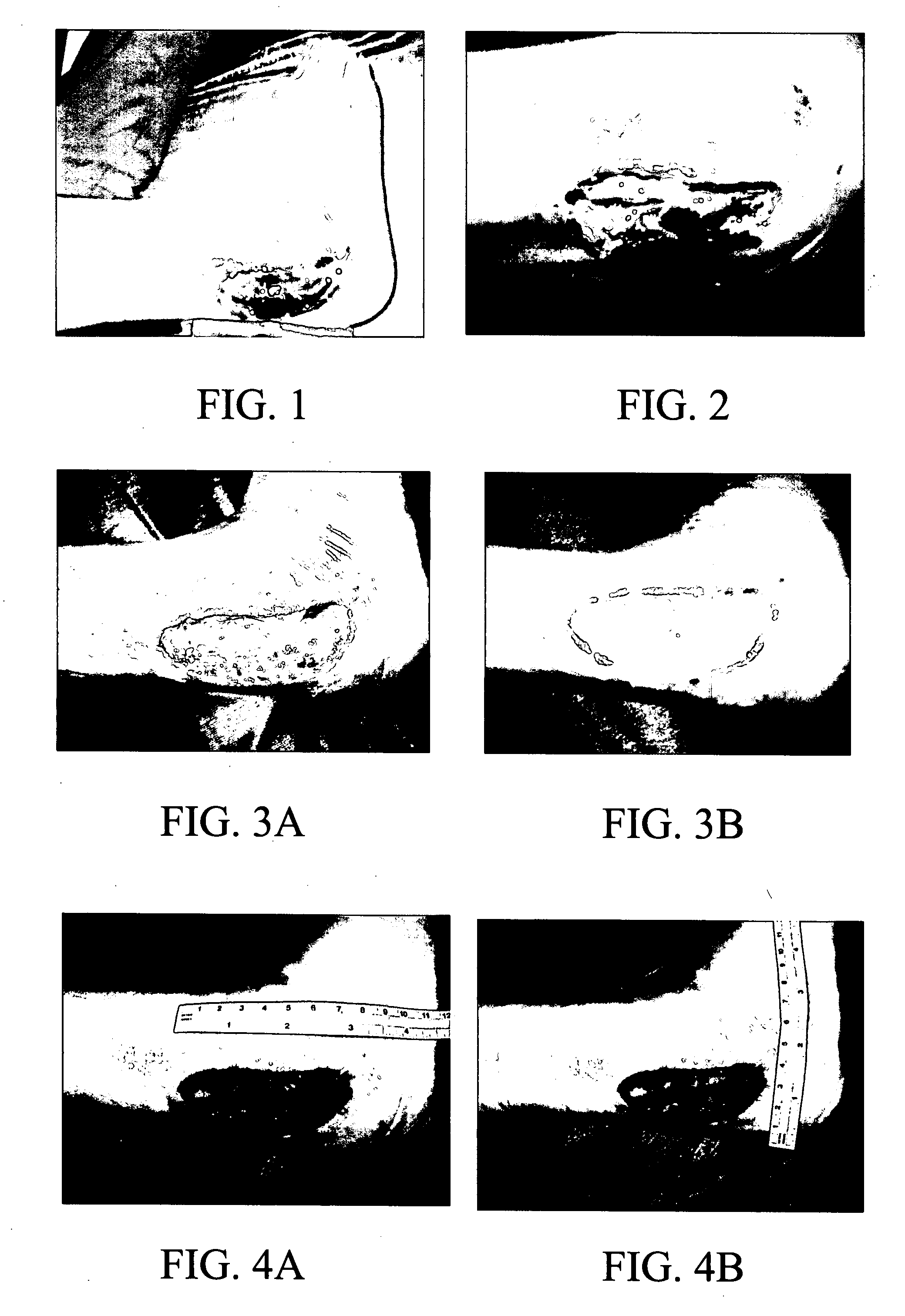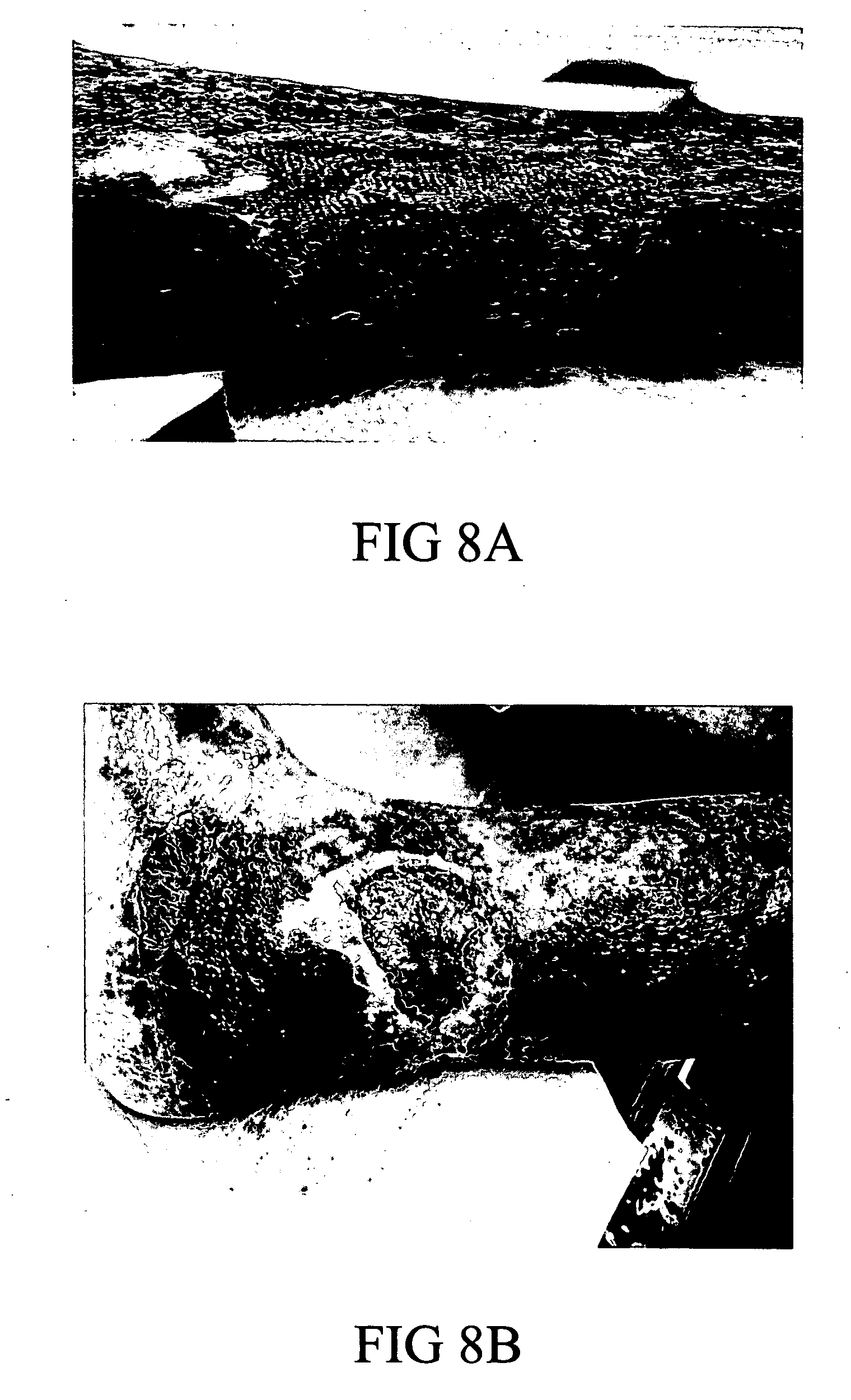Materials and methods for wound treatment
- Summary
- Abstract
- Description
- Claims
- Application Information
AI Technical Summary
Benefits of technology
Problems solved by technology
Method used
Image
Examples
example 1
Case Study
[0050] A study with a composition of the invention comprising one part potassium ferrate and seven parts of hydrogen resin (2% cross-linked poly(styrene-sulfonic acid) was conducted on a 36 year old female patient who had had a bursectomy on the right inferior malleolar. She suffered a subsequent dehiscience of cutaneous sutures (rupture of sutures) that developed into a malleolar ulcer. Her orthopedic surgeon referred her to plastic surgeons for treatment of the ulcer. The patient was examined on Nov. 21, 2005. The malleolar ulcer was found to be in Stage 2 covering an area of 8 cm by 3 cm. On Nov. 30, 2005, the wound was cleansed and surgical debridement and escarotomy were performed. The wound was found to be infected with Klebsiella. Treatment with the test composition was started on Dec. 5, 2005 by spreading the powder over the wound site. After one week, the wound was measured, cleansed with saline solution; and the scab was removed to evaluate the progress of granu...
example 2
Preliminary Report on a Case of Pressure Ulcer
[0051] An elderly patient at the Residencia Medica el Olivar (RMEO), a multipurpose geriatric medical unit in Lima, Peru, was treated with a composition comprising potassium ferrate and a hydrogen form of 2% cross-linked poly(styrene-sulfonic acid) resin (hereinafter the subject composition). Under this protocol patients must have two or more ulcers. One of the ulcers receives the subject composition while the other ulcers serve as controls, receiving the standard medical and surgical care.
[0052] The case (LB1) was of a centenarian caucasic female patient that developed multiple wounds in the shin and calf of the left leg. The leg was only mildly swollen but the ulcers had an indurated border that was red, elevated and mildly tender. There was some yellowish secretion at its borders. The ulcer was stage 2a, (minimal depth), which allowed taking two dimensional measurements and photos during a month of comprehensive nursing care. Periph...
example 3
Antimicrobial Activity of Compositions
[0053] Compositions of the subject invention have antimicrobial properties. In an exemplified embodiment, a composition comprising seven parts of the hydrogen form of a 2% cross-linked polystyrene-sulfonic acid resin and one part of potassium ferrate was submitted to STS-Duotek, an independent FDA approved laboratory, to test its in vitro activity against the following five microbes. [0054] 1. Staphylococcus aureus, ATCC No. 6538 [0055] 2. Pseudomonas aeruginosa, ATCC No. 9027 [0056] 3. Escherichia coli, ATCC No. 8739 [0057] 4. Candida albicans, ATCC No. 10231 [0058] 5. Methicillin Resistant Staphylococcus aureus (MRSA), ATCC No. 33591
[0059] Testing was based on U.S. Pharmacopeia Test Number 51—Antimicrobial Effectiveness Testing; pages 1809 to 1811, USP 24 NF19 U.S. Pharmacopeia & National Formulary—Year 2000, Published by U.S. Pharmacopeial Convention Inc. The results provided in Table IV indicate that the test composition effectively killed...
PUM
| Property | Measurement | Unit |
|---|---|---|
| Fraction | aaaaa | aaaaa |
| Fraction | aaaaa | aaaaa |
| Fraction | aaaaa | aaaaa |
Abstract
Description
Claims
Application Information
 Login to View More
Login to View More - R&D
- Intellectual Property
- Life Sciences
- Materials
- Tech Scout
- Unparalleled Data Quality
- Higher Quality Content
- 60% Fewer Hallucinations
Browse by: Latest US Patents, China's latest patents, Technical Efficacy Thesaurus, Application Domain, Technology Topic, Popular Technical Reports.
© 2025 PatSnap. All rights reserved.Legal|Privacy policy|Modern Slavery Act Transparency Statement|Sitemap|About US| Contact US: help@patsnap.com



